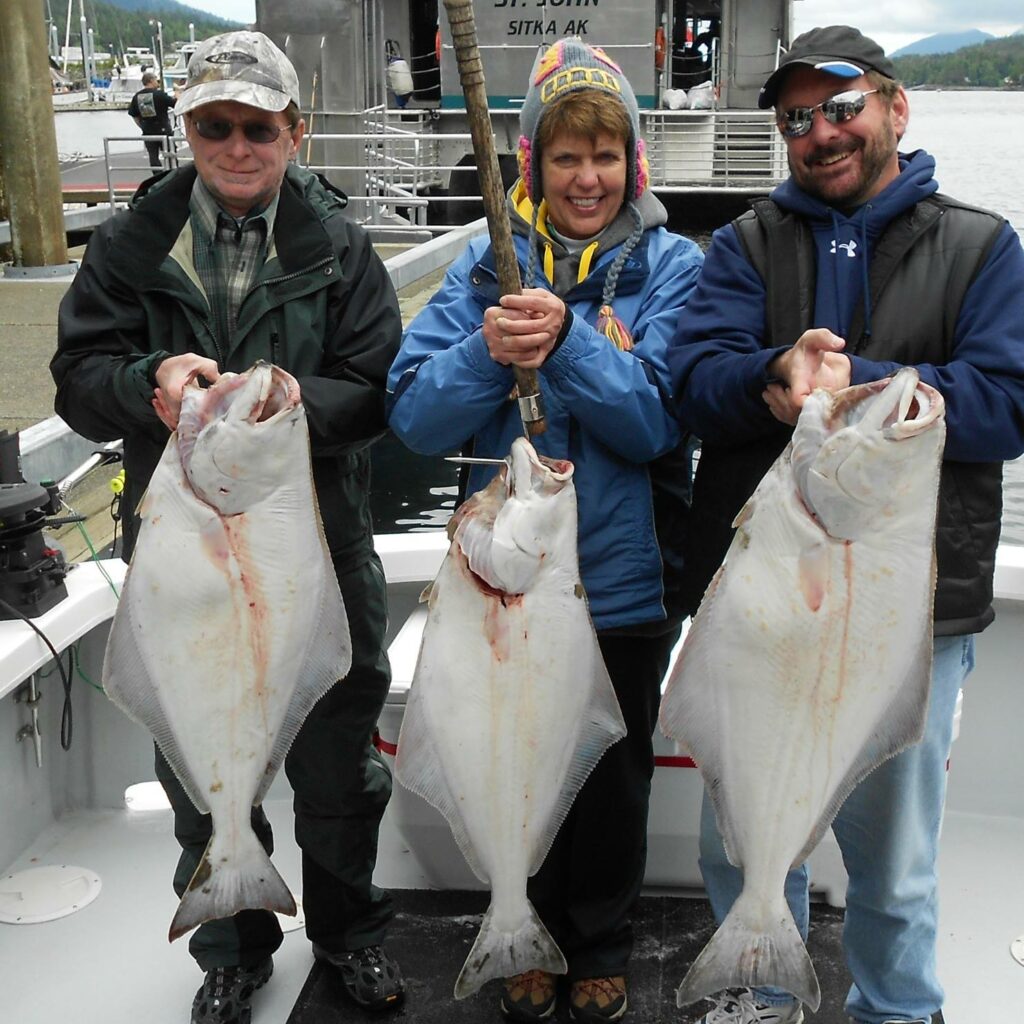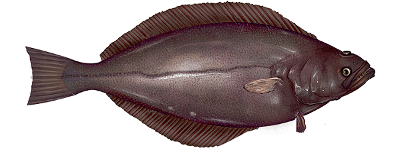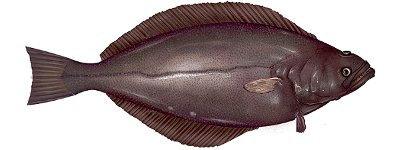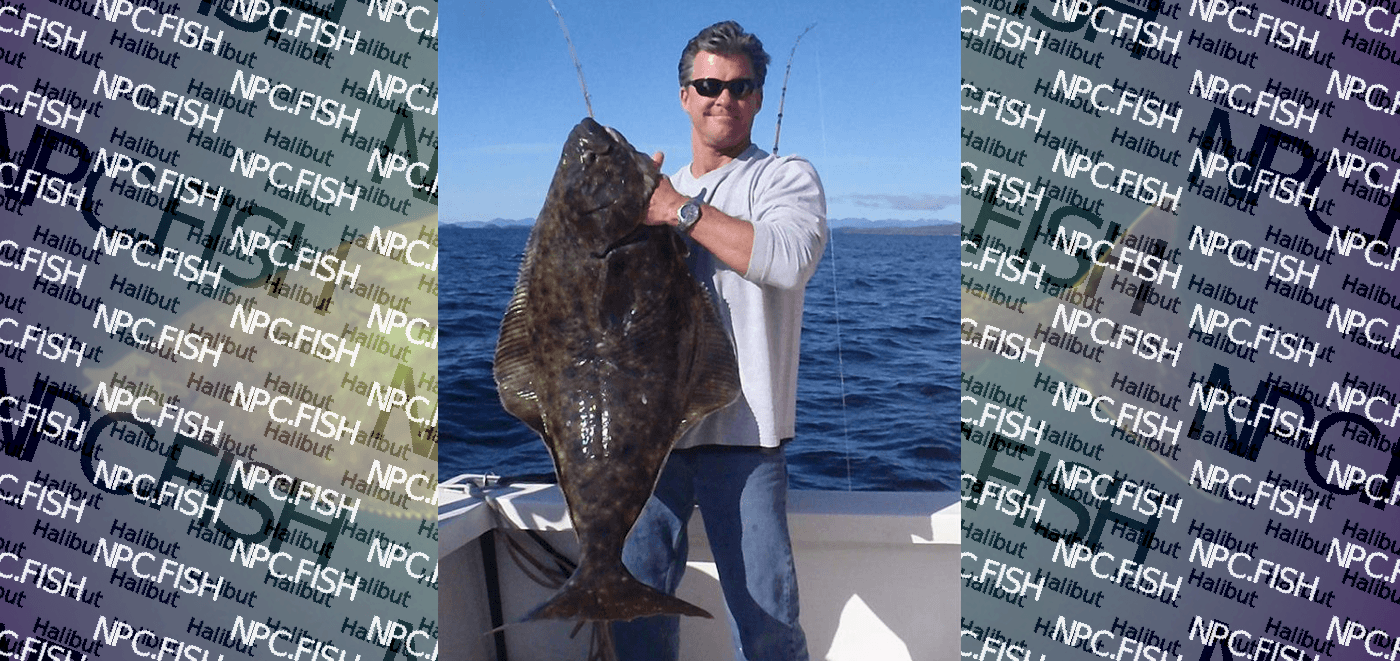Pacific halibut is the most crucial flatfish in Family Pleuronectidae. Halibut swim sideways, with one side down and the other facing up. The top of the Halibut, where both of its eyes are, is colored to camouflage it. The Halibut are lazy eaters who perch themselves on the top of a shelf and lay there with their mouths open, waiting for the food to get washed up into their awaiting bellies. We look for these places along with flat sandy bottoms to catch Halibut and have an excellent chance to find a few nice size fish. Although they swim sideways, Halibut have flesh on both the upper and lower sides. When looking at them, you can see a distinct line right down either side of the fish right down the middle when you filet them. You follow the marks with your knife and cut along the edges making delicious filets. Then you roll it over and do the same on the other side, making four nice chunks per fish.
Where do they live?
Fishing for Halibut on your Alaska Cruise, you could be fishing at 20 Feet up to 1000 Feet, but they have been found at expanses up to 3,600 ft. We usually angle in 200 to 300 ft of water.
They prefer ocean temperatures in the area of 38-47º F.
Halibut Quick Details
They can grow to over 8 feet and weigh over 600 lb Lifespan 55 years (males and females). Range The Bering Sea, to California & west to the Sea of Japan, Features Both eyes on the right (upper side), with limited exceptions Local Names Large Halibut are “barn doors,” small Halibut are “chickens.

Additional Information
Arrow-tooth flounder
Amateur anglers occasionally confuse Pacific Halibut with Arrow-tooth flounder. Also, the Greenland Turbot
There are three stocks of arrow-tooth flounder: Bering Sea/Aleutian Islands, Gulf of Alaska, and West Coast:
Arrowtooth flounder are found from the Bering Sea through Northern California.
Arrowtooth flounder is a relatively large, brownish-colored flatfish with a largemouth.
They’re members of the family Pleuronectidae, the right-eyed flounders, which have both eyes on the right side and lie on the ocean floor on their left side.
Biology
Arrowtooth flounder grow slowly and can live up to 27 years.
Males can reach 2 feet in length, and females grow a bit larger, up to almost 3 feet.
Males sexually mature when they reach 3 to 7 years old, and females can reproduce when they reach 4 to 8 years old.
The spawning season varies by location:
Off the West Coast from late fall through early spring.
In the Gulf of Alaska during spring and summer.
Off the coast of Alaska during fall and winter.
They spawn multiple times during a spawning season, releasing eggs fertilized externally.
Arrowtooth flounder eggs hatch in deep water (below 400 meters) and rise up the water column as they develop, then settle to the ocean bottom during the summer and fall.
Larvae eat copepods, a type of small crustacean.
Juveniles and adults feed on crustaceans (mainly pink shrimp and krill) and fish (mostly cod, herring, and pollock).
Various fish and marine mammals prey on arrow-tooth flounder, including skates, sharks, short spine thorny heads, Halibut, orcas, other toothed whales, and harbor seals.
In the Gulf of Alaska, arrow-tooth flounder is an integral part of the diet of Steller sea lions.
Greenland turbot (Reinhardtius hippoglossoides) is a Pleuronectidae (right-eyed). They’re members of the family Pleuronectidae, the right-eyed flounders, which have both eyes on the right side and lie on the ocean floor on their left side. The American Fisheries Society uses “Greenland halibut” as the common name for Reinhardtius hippoglossoides instead of Greenland turbot. To avoid confusion with the Pacific halibut, Hippoglossus stenolepis the common name of Greenland turbot. In the US and Canada, it is marketed by this name.

GREENLAND TURBOT
Greenland turbot has I be found in the Pacific Ocean from the Sea of Japan to the waters off California. Examples have been found across the Arctic in the Beaufort (Chiperzak et al. 1995) and Chuchki seas. This species primarily inhabits the deeper slope and shelf waters (between 100 m to 2000 m; Fig. 5.1) in bottom temperatures ranging from -2°C to 5°C. The area of the highest density of Greenland turbot in the Pacific Ocean is in the northern Bering Sea, straddling the border between US and Russian exclusive economic zones. Juveniles are believed to spend the first 3 or 4 years of their lives on the continental shelf and then move to the continental slope (Alton et al. 1988; Sohn 2009; Fig. 5.2). Adult Greenland turbot distribution in the Bering Sea appears to be dependent on size and maturity as more significant, more mature fish migrate to deeper warmer waters. In the annual summer shelf trawl surveys conducted by the Alaska Fisheries Science Center (AFSC), the distribution by size shows a clear preference by the smaller fish for shallower (< 100m) and colder shelf waters (< 0°C). The larger specimens were in higher concentrations in deeper (> 100 m), warmer waters (> 0°C) (Fig. 5.3 and Fig. 5.4).
Unlike Halibut, both flounders have coarse scales and prominent, needle-like teeth. When cooked, both flounder turn mushy and are generally considered unsuitable.


